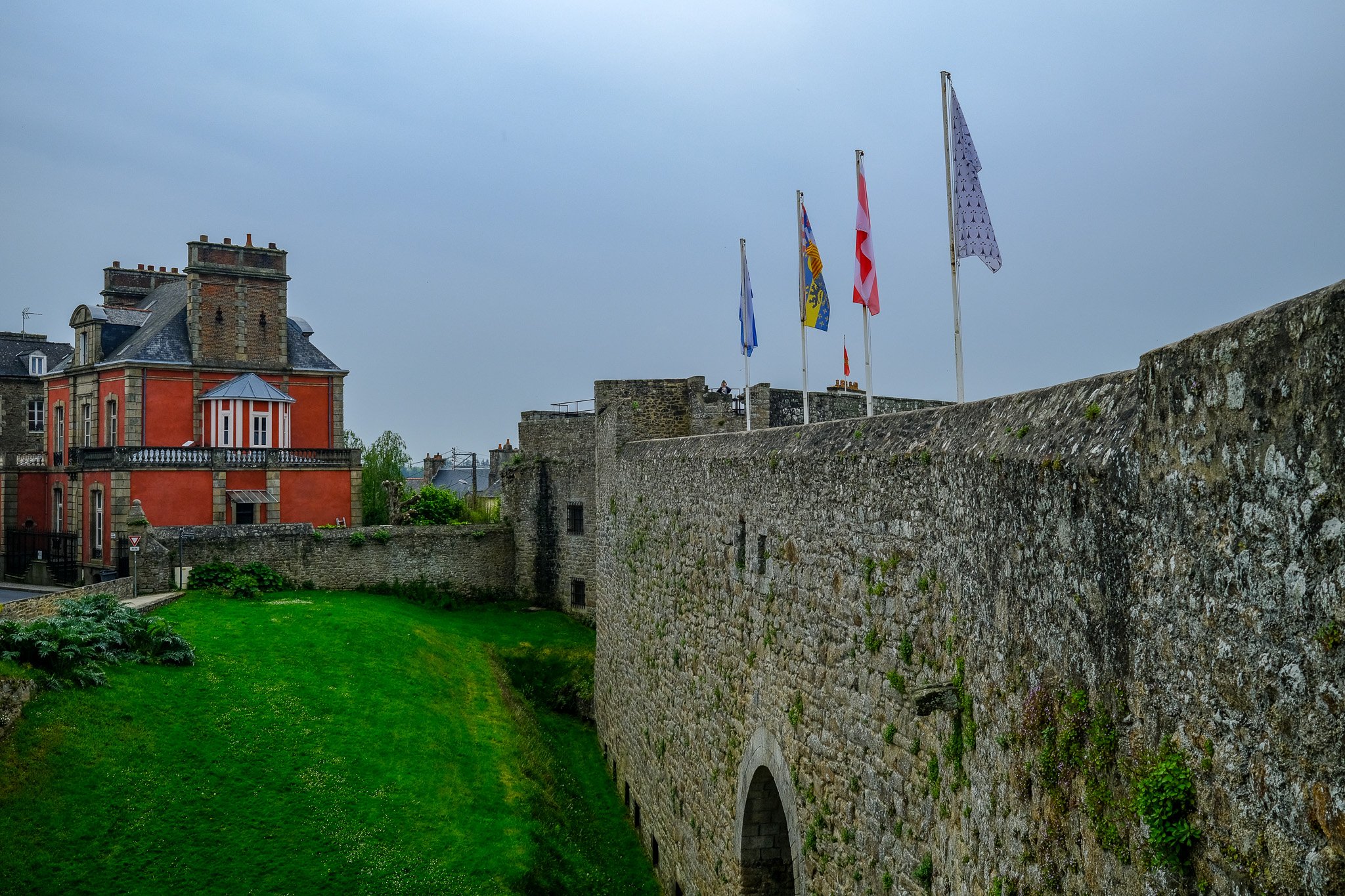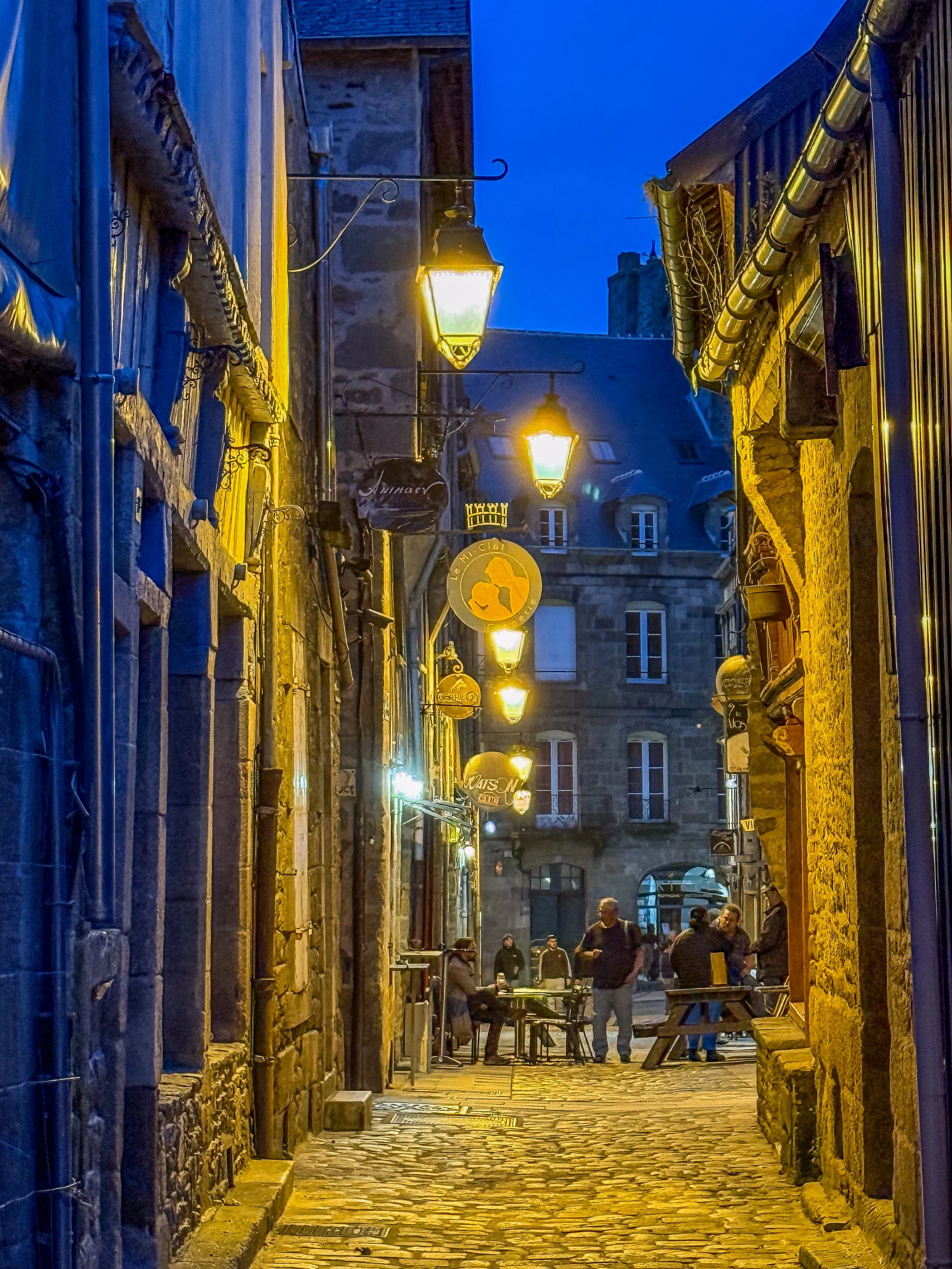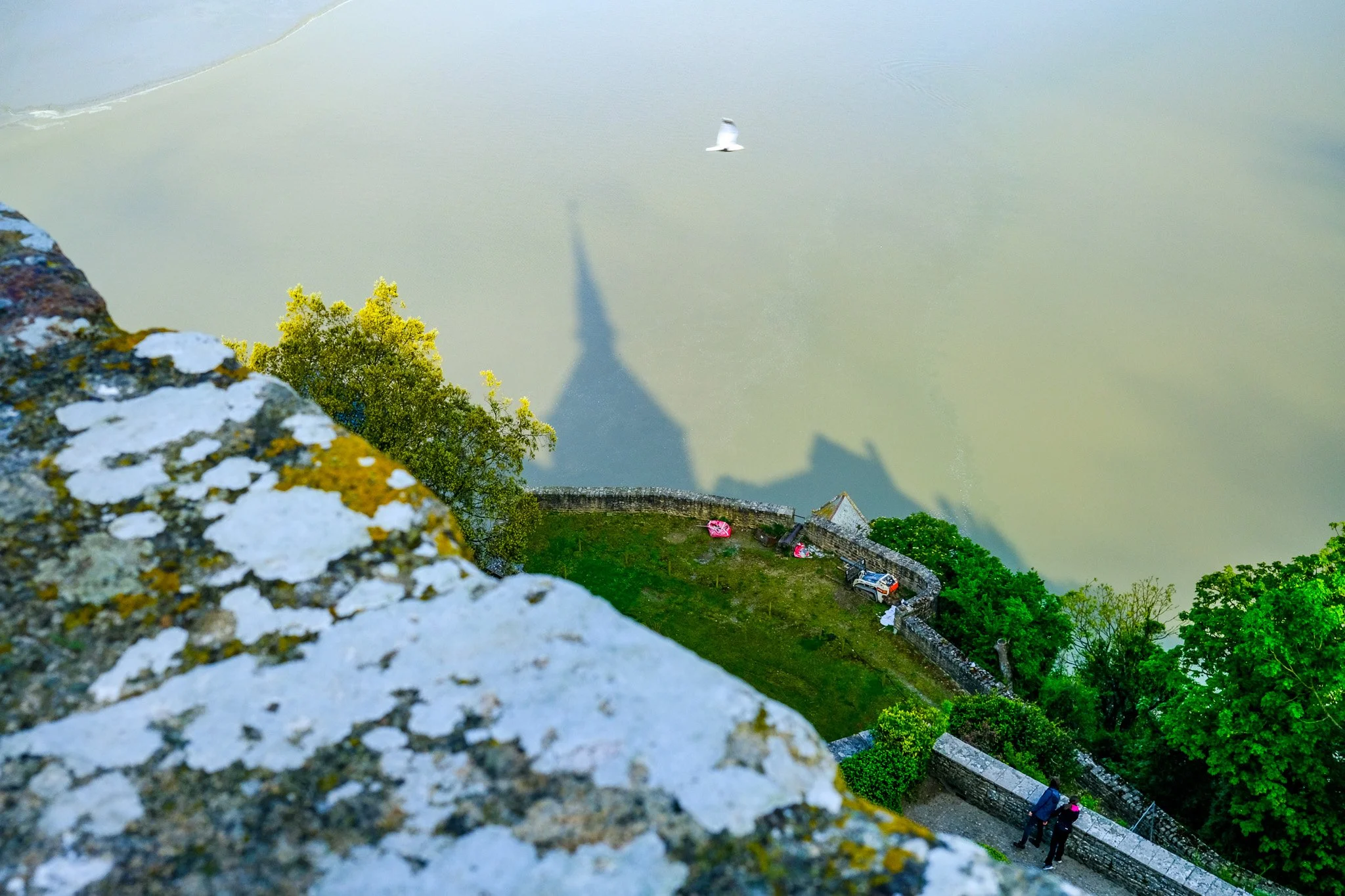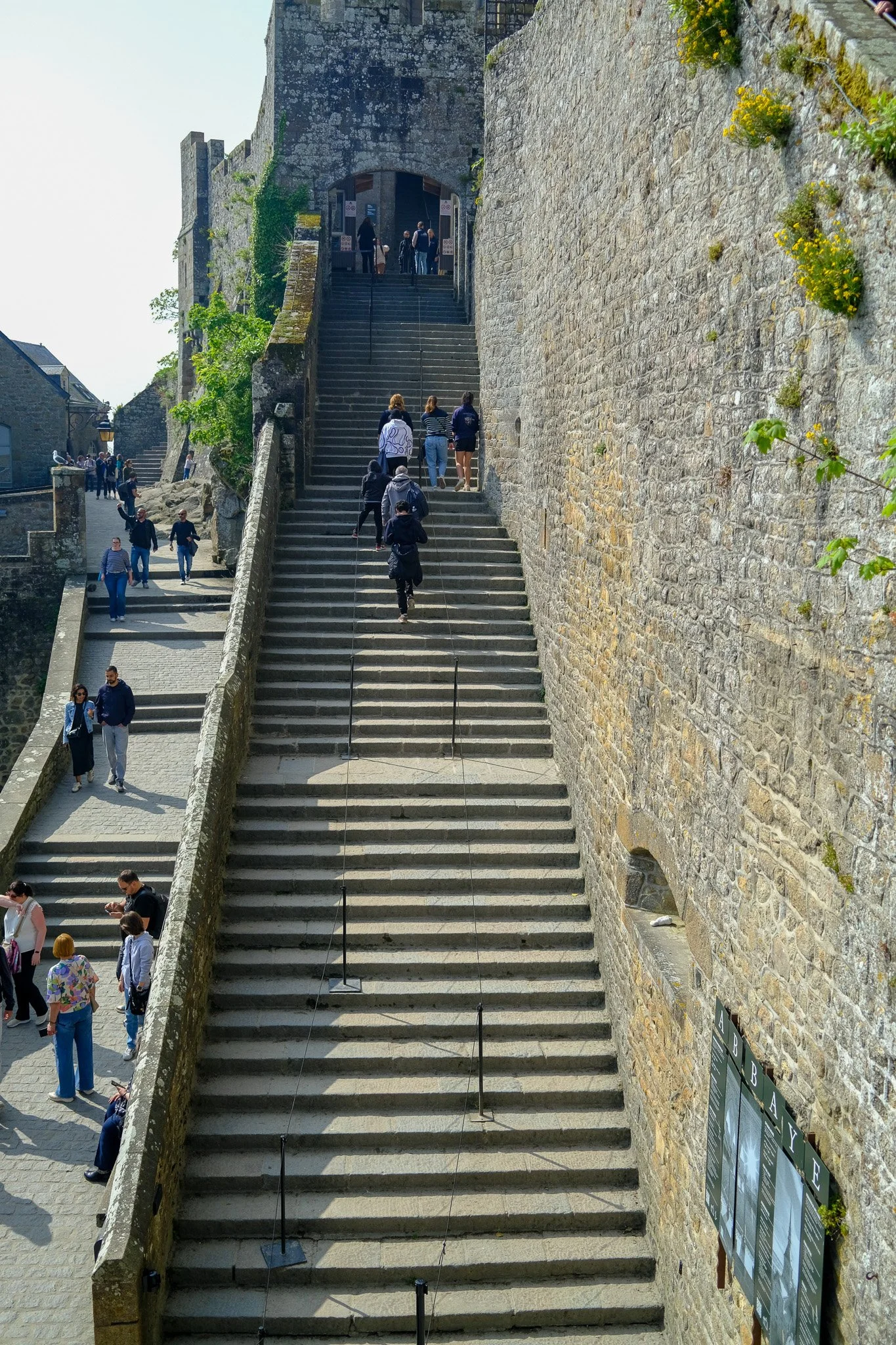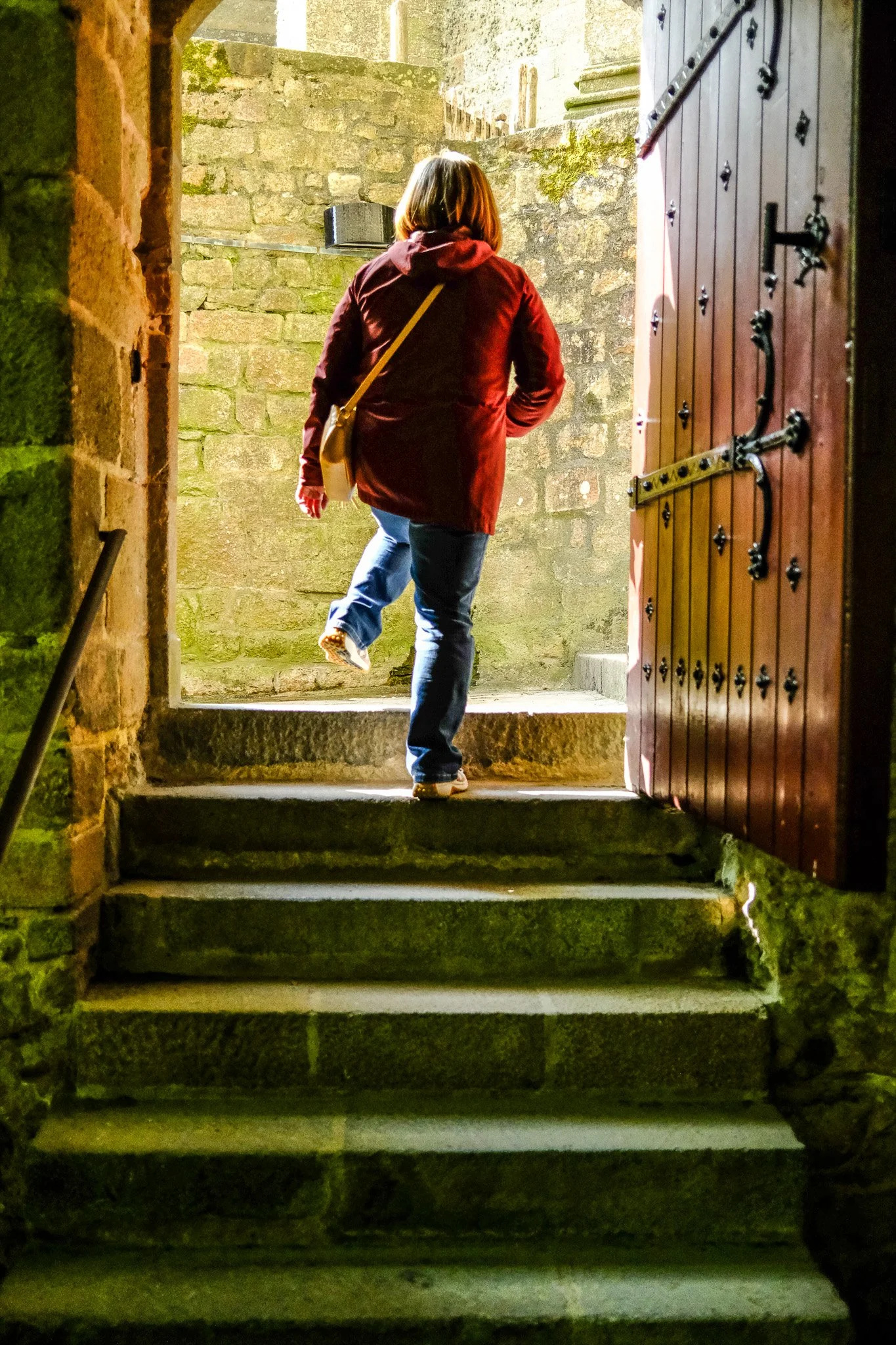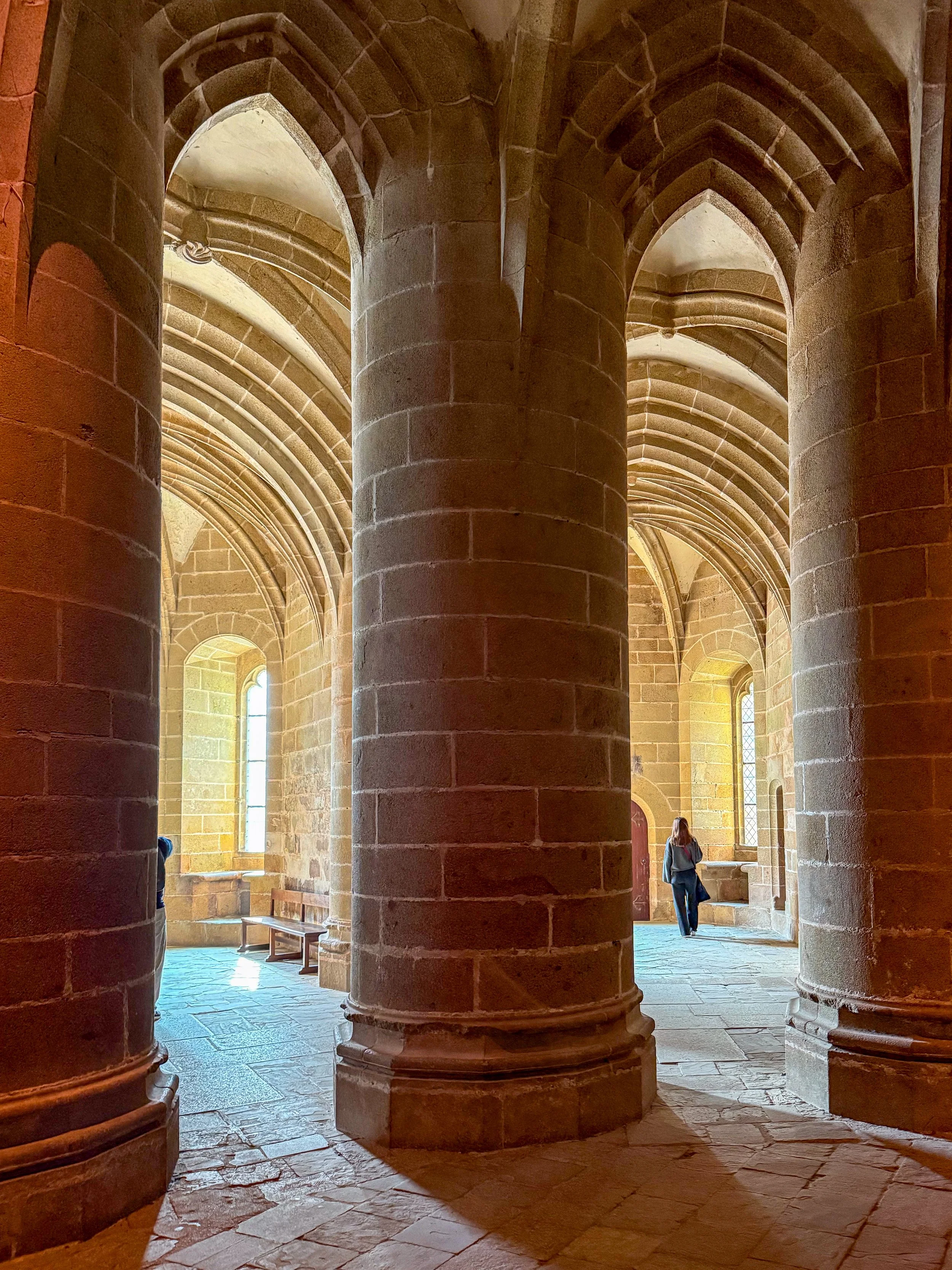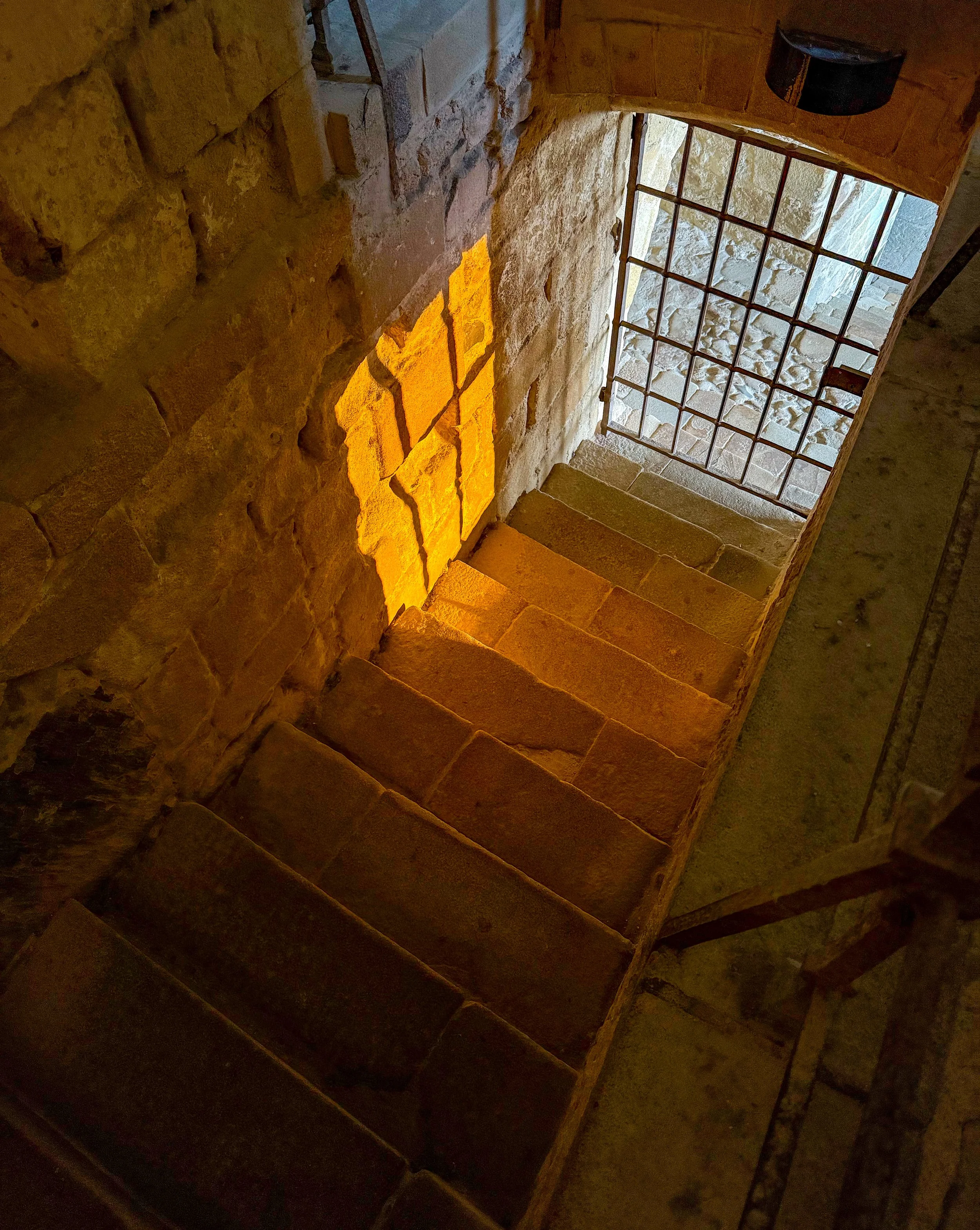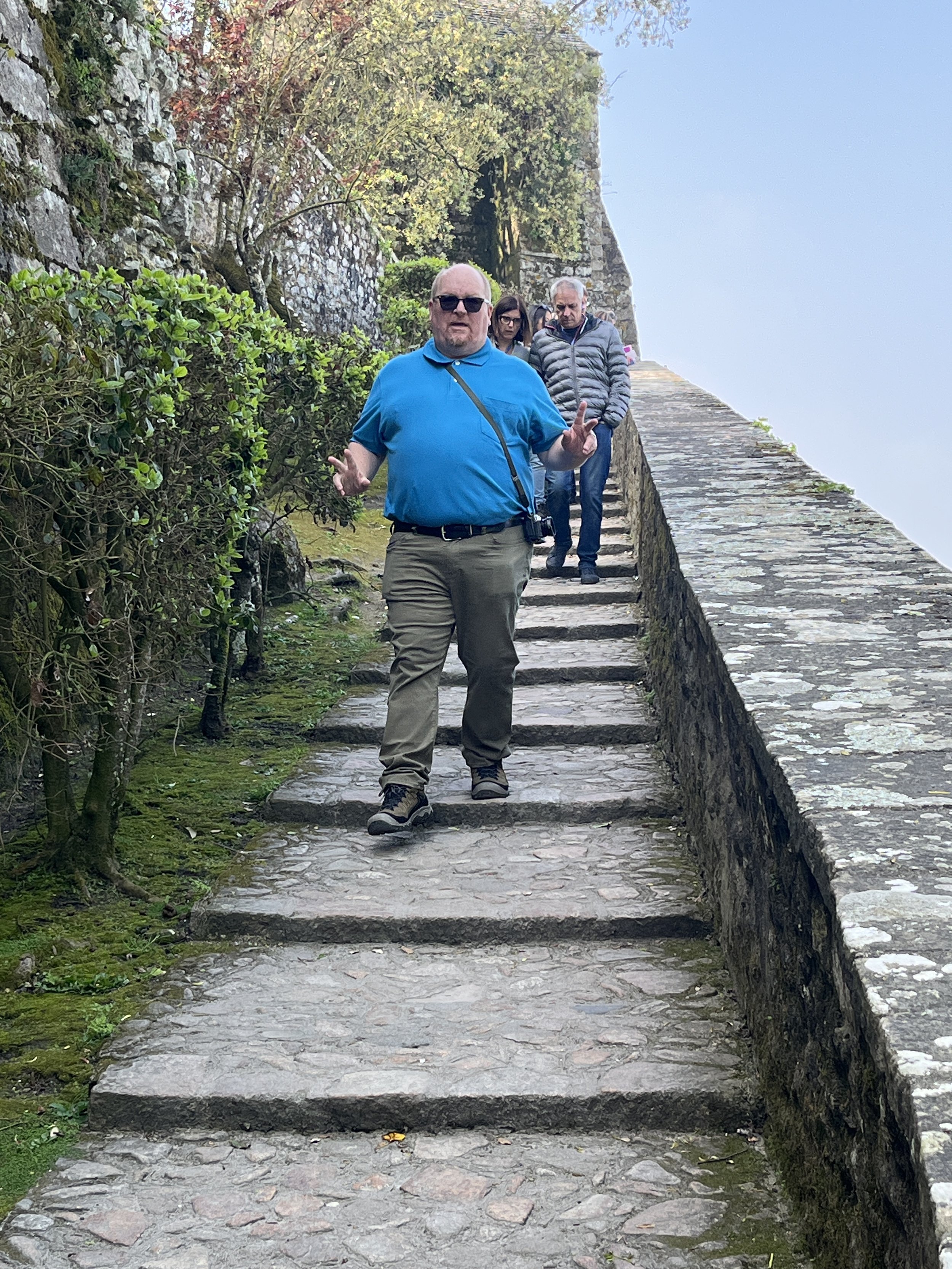Road trip to Normandy, Brittany, and the Loire Valley: Part 2
The Brittany coast
“At the next roundabout, take the second exit.” We heard this ad nauseum from our GPS for nearly three hours as we drove across the Norman countryside. Most roundabouts have three or four entry points, so taking the second exit amounts to continuing straight on the road you’re already on. But not always. One night we went to dinner at a farmhouse and to get the five miles there we went through 1,172 roundabouts, the last of which probably had seven entry points. The GPS said “At the next roundabout, take the fourth exit. Good luck, tourists.” We had trouble counting them all because some were mere alleyways and the roundabout was a smaller circumference than we had previously experienced, which meant we were going too fast to make an exit. So, we made three full loops in the roundabout counting exits until we surmised that the least-likely-to-be-the-successful-one was the right road. Roundabouts are definitely “a thing” here but they do make a lot of sense. One rarely has to come to a complete stop and the money the government saves by not having to put in stop lights or sensors must be astronomical. They tend to freak the tourists out, however, especially in Paris. It’s kind of like jumping onto a moving train. We were lucky because our driver, Mark, was fearless and handled them like a champ, even if it meant doing some extra loopty-loops. He only cursed twice that I heard.
Inside the protective walls of Dinan, Brittany
The castle at Dinan
Dinan, a 14th century medieval city in Brittany
We finally arrived at the charming medieval walled city of Dinan in Brittany, which was to be our home base for the next couple of nights. Our small hotel was centrally located across from the castle inside the walls—Intra-Muros as they call it— so it was easy for us to walk and explore. We were hungry and the hotel clerk told us about a great Venezuelan restaurant called Argile & Vin that had arepas, a type of flatbread with a crunchy exterior and a soft inside that’s made of a ground maize dough and stuffed with a filling. We made our way through the oldest part of the city to find it and upon arrival we were greeted by a friendly man who was clearly proud of his food telling us we were about to enjoy something good. He also convinced us to try two different types of ceviche—one spicy that appealed to Chien and me, and one with mangoes and avocado that caught our friend’s eyes. Next came three different colored empanadas, purple, green, and golden which contained chicken, beef, and fish. And after those came the arepas, those crispy corn pockets stuffed with delicious meats. Oh my, all of it was so good. The restaurant was also a wine shop, and I had asked to see a wine list when we first sat down. Instead, he asked us if we would just let him bring us wines and we readily agreed. He hid the bottle labels from us as he poured and we all played the blind taste guessing game, which is always humbling when you drink as much wine as we do. None of us guessed that he had brought us wines from the Languedoc region of southern France. A red and a white, both paired beautifully with the food and were extremely affordable.
The other charming thing about the restaurant was that it was covered in ceramics. There was a spectacular multi-piece light fixture that looked like some kind of underwater plant which was strung with lights. There were vases and pots on every shelf, and two huge old sound horns mounted to the walls up high, like the kind you might have seen on an old Victrola, only three times the size, which they had wired to play the restaurant’s music. Of course, all the food was plated on original ceramics, too. The restaurant looked like a hybrid between a wine shop and a ceramics studio with lovely jungle plants in between. It was a very cool and original vibe. This is all relevant because Mark’s wife, and our other friend and travel partner, Marie, is a ceramic artist and art professor back in the US. We learned that the wife of the man was the artist and to our delight, she walked in during our meal. Marie was introduced to her—Liney—and though the language barrier made communicating a bit tough, Marie secured an invitation to visit her studio the next morning.
We finished our meal and resumed our wanderings through the town. The 14th century architecture was by then lit by the glowing 19th century fixtures creating a Disneyesque tableau. As Americans, it happens often that things in Europe look faked. We are so conditioned to the Disney, Hollywood, or Las Vegas versions of things back home that when we walk among the real, we have difficulty believing our eyes. I find myself constantly verbalizing that this is indeed a towered castle, or that is really a five-hundred-year-old house as if to remind myself to take it all in.
The ghost of Van Gogh shows itself in the colors of Dinan at night
The next morning after breakfast at the hotel, we went to Liney’s ceramic studio and shop, La Jarre, which, it turns out, was literally next to our hotel. Some kind of fate at work there. As we walked through the door and began to take it all in, I recognized her style from the night before and while the three of us poked around the store and chatted with her assistant who was working with a laser cutter for pottery, Marie was taken on a tour and having rich discussions about the trials and tribulation, the joys and heartbreaks, of pottery making regardless of which continent one was working on and which language one spoke. They seemed to understand each other through the common language of art. We bought some beautiful things from her before saying our goodbyes.
Purchases from Liney’s studio in Dinan
Our journey resumed westward towards the sea and the city of Saint-Malo. Some of you might know this city from your own visits, or from your World War II history, of perhaps you read the wonderful book, All the Light We Cannot See by Anthony Doerr, where the blind heroine learns the walled city by running her hands over the model her father makes for her. It was a bucket list place for each of us and the excitement grew as we could see the church spires and the steel gray water behind them as we approached the coast.
We parked four floors underground and emerged near one of the gates to the city. We calculated an early arrival so we could get parking, but there were already many tourists filling the shops and the café-lined streets. But first things first as no day can start without pastry and coffee, so we stopped for a chausson aux pommes (apple tart pastry) at Bakery Maison Hector. The first bite was an explosion of flaky pastry, the universal sign of quality (and butter). Properly caffeinated and energized we walked our way around this ancient city, down narrow alleyways and up the winding streets, stopping in clothing stores that sold the famous Bretagne blue-striped French sailor shirts, and never skipping any wine or cheese shops, or to ogle the fresh seafood on display seemingly everywhere. We finally reached the seawall and climbed the steeply pitched tread-worn stone steps where we were greeted with a classic scene of boats resting on their keels and a beach at low tide under a cloudy gray canopy. The somber weather only heightened the romance as we stared out past the injured vessels to the misty sea.
Saint-Malo at low tide
The Brittany coast of France
Mark and Marie on top of the ramparts of St-Malo
The wall that surrounds the city can be completely traversed on foot and after we covered a long stretch of it, we descended some other very narrow stairs where each step had been deeply bowed by centuries of feet treading them. Stepping off the last step with relief, there before me stood an oyster bar. Immediately, my mental bucket list retrieved an entry: Eat oysters and drink Muscadet wine on the Atlantic coast in France someday. That day had arrived.
I know oysters are a love/hate food and you know which camp Chien and I are in. Fortunately, Mark and Marie shared our passion, so we proceeded to eat a couple dozen Atlantic beauties, #3 and #4, plus a flat oyster that was kind of nutty, like hazelnuts. And we shared a bottle of excellent Muscadet from Nantes, the city at the end of the Loire River where it releases into the Atlantic. The very briny oysters dressed in lemon juice and red wine vinaigrette with shallots were like eating the ocean, and the wine, with its own salinity and shell-like minerality only enhanced that feeling that we were some kind of ancient medieval mariners. My belly glowed warm from the inside out, a feeling brought on by oysters, which is kind of cosmic. If you don’t like the snotty little mollusks, well I certainly understand, but you’re missing out on one of the great gastronomical joys in this life. Looking at my list again, I made a big fat check mark.
French Oysters from the salty Atlantic Ocean
The grand-tour-stop in Brittany for us, however, was happening the next day when we made the hour-long drive to Mont Saint-Michel, another absolute must-see place. The giant island abbey is technically in Normandy, but just over the regional border, so it is easy to assume it is in Brittany. Is there a living soul who hasn’t seen multiple photos of Mont Saint-Michel? Probably very few. But nothing prepares you for your first sight of it. It’s massive. Your first thought is who thought to build this and how did they convince so many people to give their money, lives, and labor to complete it? We learned that the first monk to scale the rock and hold a ceremony was in the early-700s, so maybe there were less people then, or they had nothing else to do during the dark ages.
The approach to the island used to be difficult marshland full of quicksand and, of course, timing your journey so that the tides were out. Now there is a convenient raised road that takes visitors to the front gate. This is important to know because parking is about a mile away and you have the choice to either walk or to jam into a shuttle bus. We chose to jam there but walk back.
Mont Saint-Michel
Looking down onto the shadow of the abbey
You might assume that the island is more of a town, and this is partially true. There is a commercial section with shops, restaurants, and even a post office where you can mail postcards marked with the St-Michel stamp. But most of the island is the abbey, which sits way up high. Way-up. And you know what’s coming, right? My favorite thing to do in Europe. Stairs. All the stairs I have done in France were mere warmups for this climb. These were means stairs, too. The kind where you climb a twisting set where the top is out of view and then when you finally take the last step you are met with an entirely new set of stairs with no end in sight, over and over, proceeding all the way to heaven. I could hear God laughing at my pathetic mortal thighs, the flames shooting out of them as they burned. But we were with Mark, a firefighter, who scaled them as if he were walking in the park on a lazy Sunday. Marie right behind him, not even breaking a sweat, taking hundreds of photos as she climbed. I struggled to keep them in sight, but I persevered until, finally, there at the top, were the glorious Atlantic views, and the entry to the enormous abbey itself, with its skyward tower topped with the glowing golden Archangel, Michael, crushing the devil.
Stairs…
More stairs…
Oh God, does it ever end?
I could easily write another 2,000 words about the experience of descending down through the abbey. Passing through the towering church and the monastery; below this, the great halls, the dining rooms, the stores and housing, and at the bottom (outside the walls), fishermen's and farmers' housing. And the light! That glorious light passing through leaded glass in Celtic designs. The massive granite columns holding the entire structure aloft. All of the stone, which was quarried in Chaussey, a set of islands off of the Normandy coast, the massive beams, the heavy glass, the furniture. How did they get it up there let alone lift it into place or carve it with beautiful designs? There was a giant wooden wheel and what appeared to be a mile-long stone slide outside the abbey leading to the bottom where they could then use the wheel to lift food and supplies with ropes, block, and tackle all the way up to the top of the abbey. This wheel was built much later after the French Revolution by prisoners when the abbey was used as a prison for nearly 80 years. There were sky high gardens and trees. How did the soil get there? Mont Saint-Michel abbey was simultaneously the most impressive and ingenious engineering feat I’ve ever seen but also one of the most beautiful architectural marvels. The views alone were worth any of the pain in the climb, the religious analogy not lost on me. If you ever get to France, go out of your way and do whatever it takes to make the journey.
When we were finally exhausted by it all and had descended all the way to the bottom again, we decided to walk the mile or so back to the car. By then the sun had burned off the mist and the heat bear down onto our exposed necks. But it gave us the time we needed to absorb what we had just witnessed and to turn back again to make new photos in different light.
From there we headed south again towards the Loire Valley and the city of Saumur where rivers, castles, Da Vinci, food, and wine waited for us. That tale will be told in Part 3…

